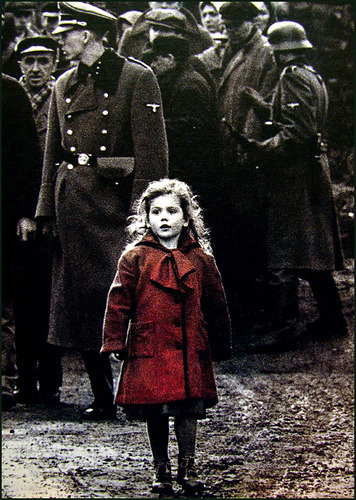First a few photos from Maria Tatar's lecture, and then some thoughts:
 |
| Had never thought about the Red Riding Hood allusions in Schindler's List |
 |
| From left to right: Meg Leroy, Maria Tatar, and John Cech. |
Wow, Maria Tatar’s
talk was just wonderful. I loved
that she started out her presentation discussing what drew her to fairy tales as a
young child, and then used that as a starting point to spring forward into
conversation about fairy tales, from the “hearth and communal fire” to the
“Amazon Kindle Fire”. Professor
Tatar reflected that when she was little, her older sister would “read” stories
to her from an old German book, even though neither of them could read
German. However, what really drew
her in, and caught her imagination, was the use of illustration and how they
could tell the story. It fell right into place then, that Prof. Tatar chose to frame so much of her talk around
illustration and the visual, showing how essential that is to the fairy tale
experience for all.
She incorporated ideas from other fields such as E.O. Wilson’s book “Social
Conquest of the Earth”, which fleshed out some interesting perspectives for the rest of her talk. Following
her discussion of Wilson, she delved into the evolution of the nature of
storytelling by way of images from Jacque Stella’s “Winter Evening” to Seymour
Joseph Guy’s “Goldilocks”.
 |
| scanned from Maria Tatar's "Enchanted Hunters" |
 |
| Seymour Joseph Guy’s “Goldilocks” |
Prof.
Tatar then moved into the commodification of fairy tales, the ups and downs
of Disney, and a wonderful suggestion that the “iconoclasts”, the
“refashioners” of fairy tales are keep the stories alive, because they
instinctually make us want to go back and see the original.
Jumping into film,
Prof. Tatar laid out her five categories for the shape that fairy tales have
taken in the resurgence in Hollywood: action/adventure, teen romance, fairy
tale paracosm, grimm crime series, and "art films". Two things especially stuck with me from her
discussion of film: one was an image of the little girl in the red coat from Schindler’s List which Prof.
Tatar’s used in a wonderful reading of this as an allusion to Red Riding Hood, a vulnerable small girl, dressed in red, be hunted down by the Nazi wolves, in the grim and bleak "forest" of World War II Nazi Germany; and the second thing, idea that fairy tales have been “dehistoricized” and “colonized” by American
culture. Lastly, her reading of
Gretel as a trickster was fascinating and seeing how others have perhaps unconsciously alluded to this aspect of Gretel in other works was wonderful: starting with the discovery that Anne Sexton had caught onto this
trickster agency role of Gretel in her poem from her Transformations collection, all the way to connecting it with Jurassic Park and Katniss, and
the idea that deception leads to beauty, poacher to song, snares to poetry.










Oooh. I am very intrigued by the Gretel connections- definitely want to hear more about this!
ReplyDeleteI know! It was really interesting, this idea that Gretel is not just this passive little person, cooking and cleaning for the witch, she's actually the one that defeats her in the end, and becomes the trickster figure, when she tricks the witch and pushes her into the oven. And then Prof. Tatar connected that to the Jurassic Park film, especially the scene in the kitchen and Katniss. I need to go back and look at my notes for more about the those last few ideas of deception/beauty, poacher/song and snares/poetry, but I just thought that was so intriguing as well!!
Delete